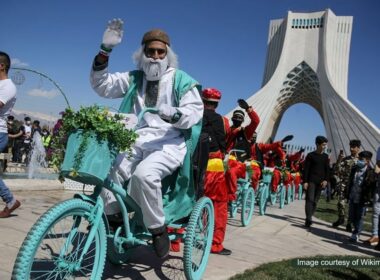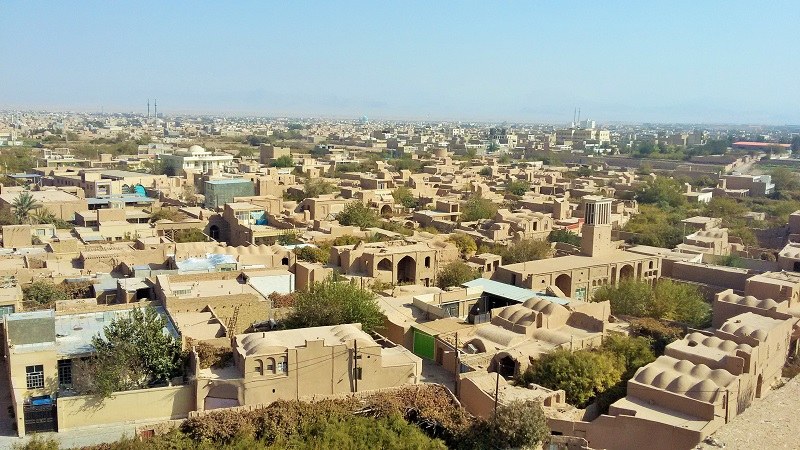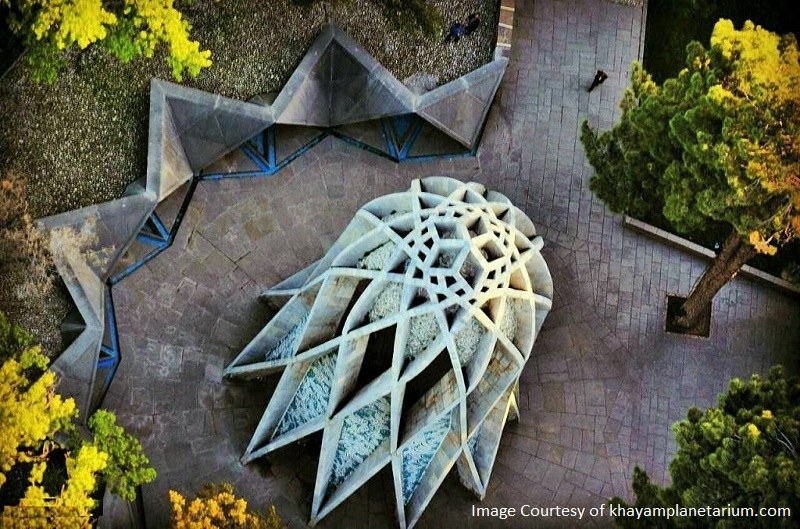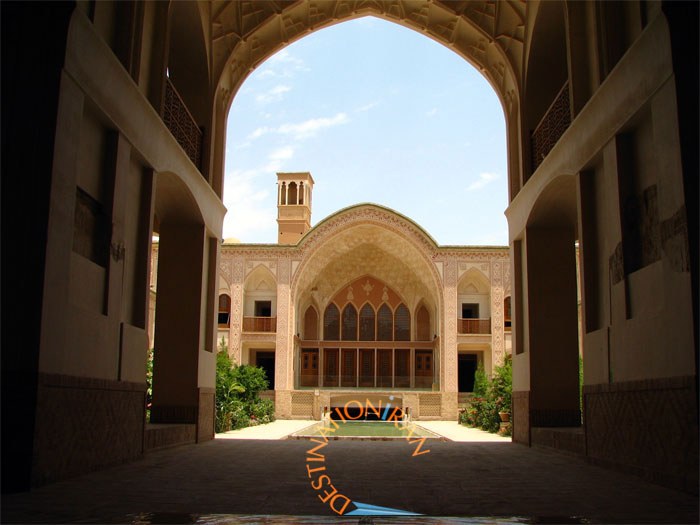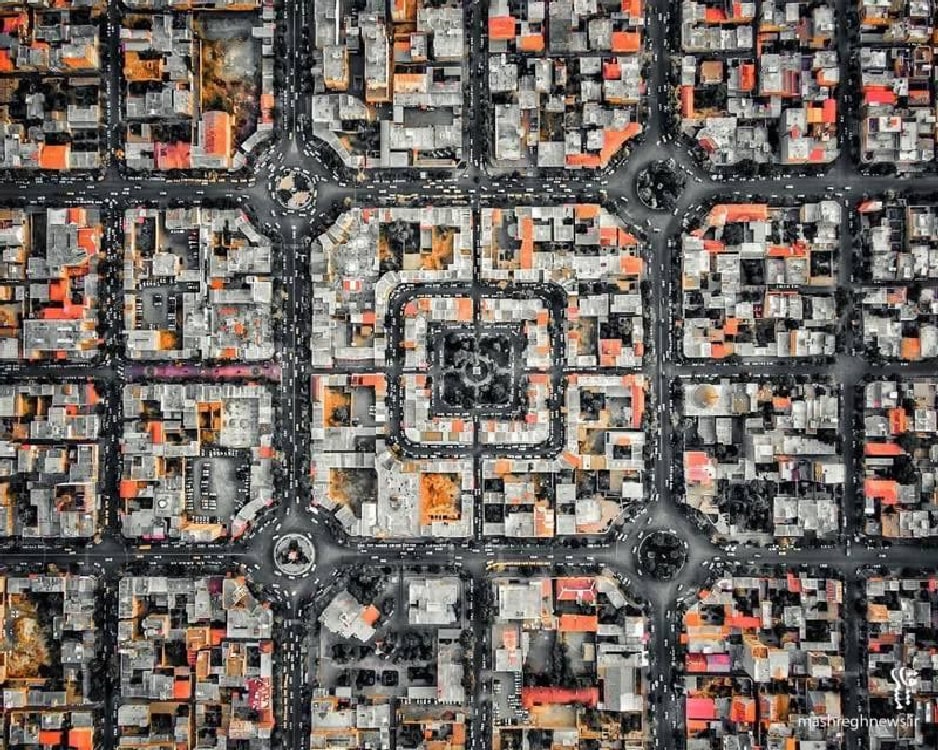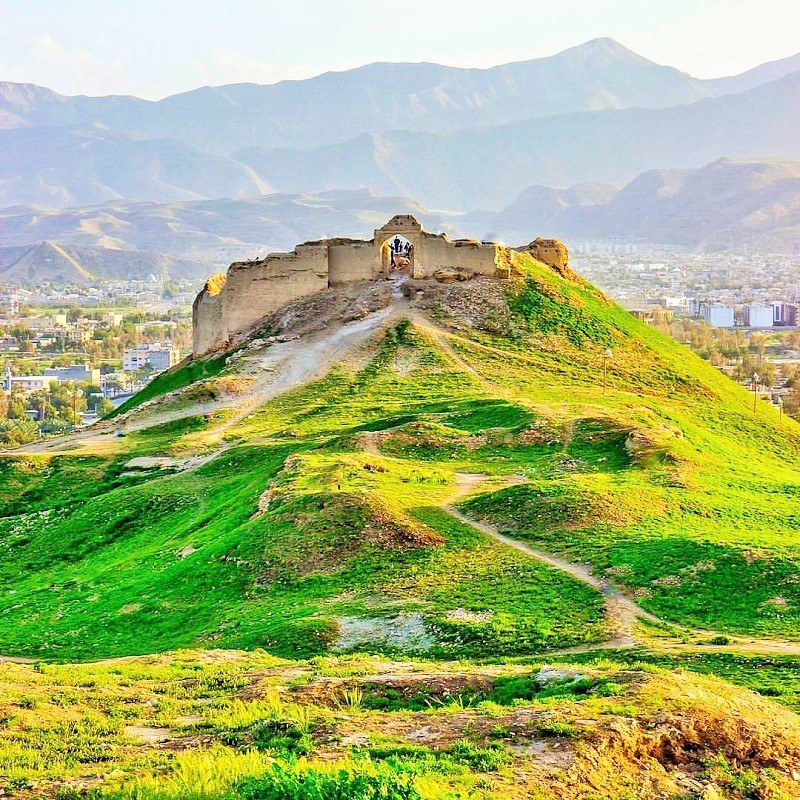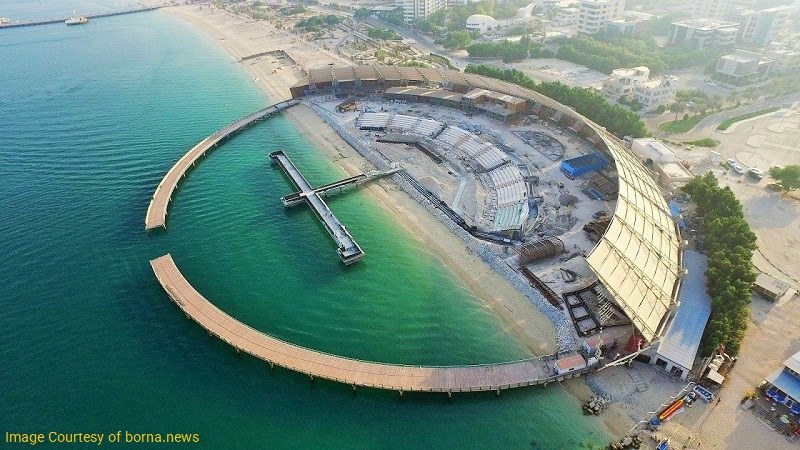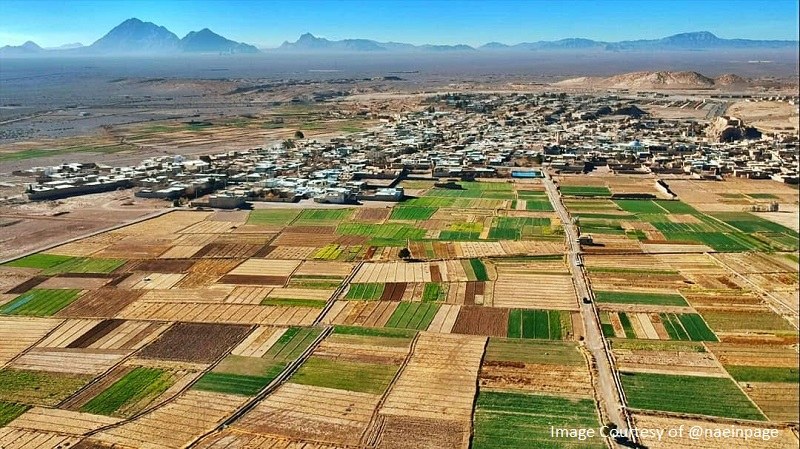
Naein is one of the desert cities of Iran with amazing tourist attractions. It dates back to 3,000 years ago. Located on the crossroads of communication highways, the city of Naein has numerous caravansaries and valuable monuments. In addition to visiting the old monuments, you can see the craftsmen weaving cloaks, enjoy the smell of spices and see the handmade carpets of the city.
Geography of Naein
Naein is a city in Isfahan Province, located at Dasht-e Kavir (northern desert of Iran). The climate of Naein is warm and dry. The city is located on flat terrain. The altitude of Naein is 1,580 meters above sea level. It reaches the Kuh-e Sar mountain range from the southwest with a maximum height of 2,330 meters. It is known as the highest mountain range in the region.
Its maximum temperature is 40 °C, its minimum temperature is -10°C, and its average annual temperature is 17°C. According to the reports, the average annual rainfall is 9 mm.
Naein has located 170 km from Yazd and 140 km east of Isfahan. There is not any airport in this city, but you can use Isfahan or Yazd airport to reach Naein. You can also drive from Tehran to this destination by car and bus. By land, you can reach Naein via the following highways:
- From Tehran: Tehran, Kashan, Ardestan, Naein
- From Isfahan: Isfahan, Kouhpayeh, Naein
- From Yazd: Yazd, Meybod, Ardakan, Naein
- From Mashhad: Mashhad, Tabas, Khour, Anarak, Naein
Naein railway station is located 38 km from Naein, on the road coming from Yazd. Therefore, a trip by train to Naein could be a good idea.
Population and Economy of Naein
According to the 2016 census of the Iranian Statistical Center, the population of Naein is 86,000 people.
From the earliest times, Naein economy has relied on agriculture and handicrafts such as weaving cloaks, kilims, and carpets. Fruit products are mainly pomegranates and pistachios. As far as cultivation goes, the products are only wheat and barley.
History of Naein
Naein was one of the five provinces of Kuru Province (current Fars), the capital of the Achaemenid Empire. The city was one of the major cities throughout history. During the reign of Sultan Muhammad Khodabandeh, the eighth Ilkhanid dynasty ruler, Naein was of remarkable importance. Sultan Mohammad founded valuable mosques and buildings, including Baba Abdullah Mosque.
In the Safavid era, Naein regained its importance and the Safavids restored the buildings of this city. In the early 1620s, Isfahan was the capital of Iran. It was at this period that Naein became one of the cities of this province. Before that, Naein was a city of Yazd Province.
Historical Attractions inside the City
Here’s a list of historical monuments inside Nain:
Baba Abdullah Mosque of Naein
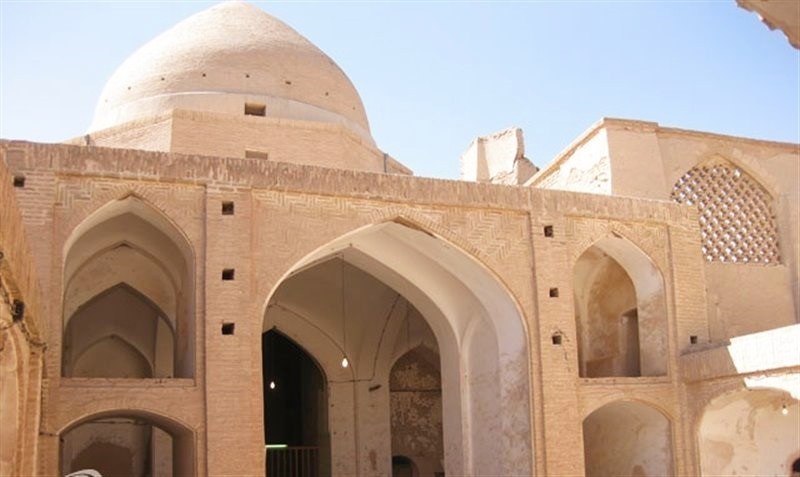
The traditional monument of Baba Abdullah Mosque was originally a dome-shaped structure of the Ilkhanid period used as a tomb. Later the mosque was developed near it. This historical monument has a two-eyvan courtyard.
Bafran Friday Mosque
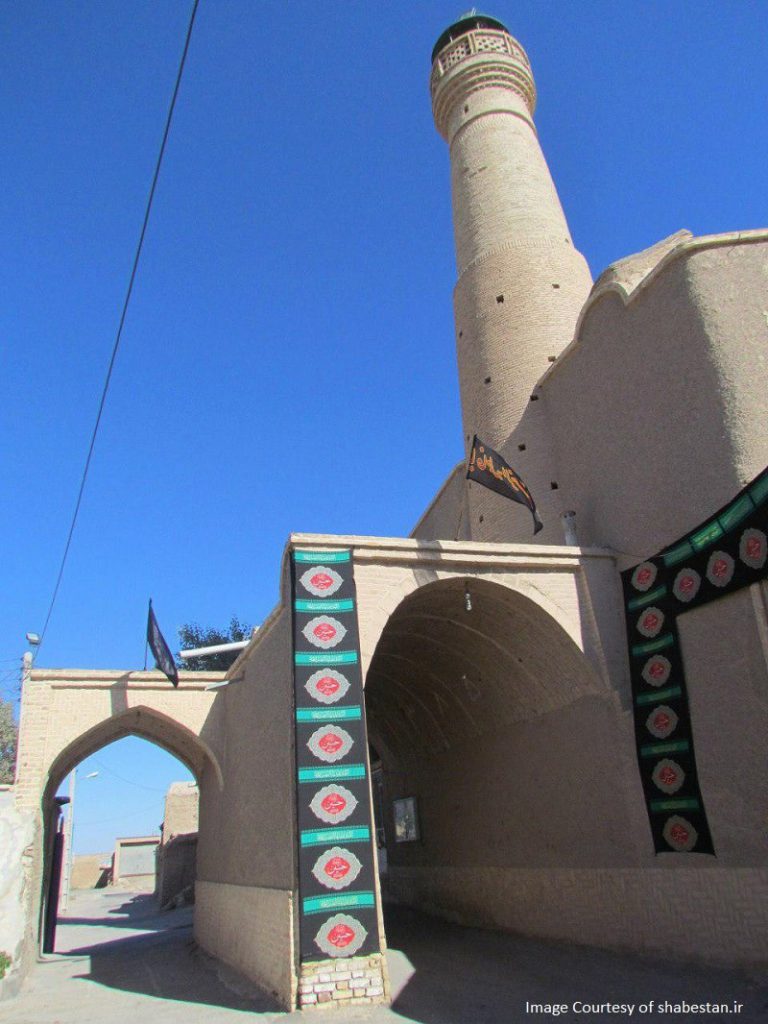
This mosque probably belongs to the early post-Islam centuries. Some people believe that the mosque was a fire temple for Zoroastrians before the introduction of Islam to Bafran.
Naein Friday Mosque
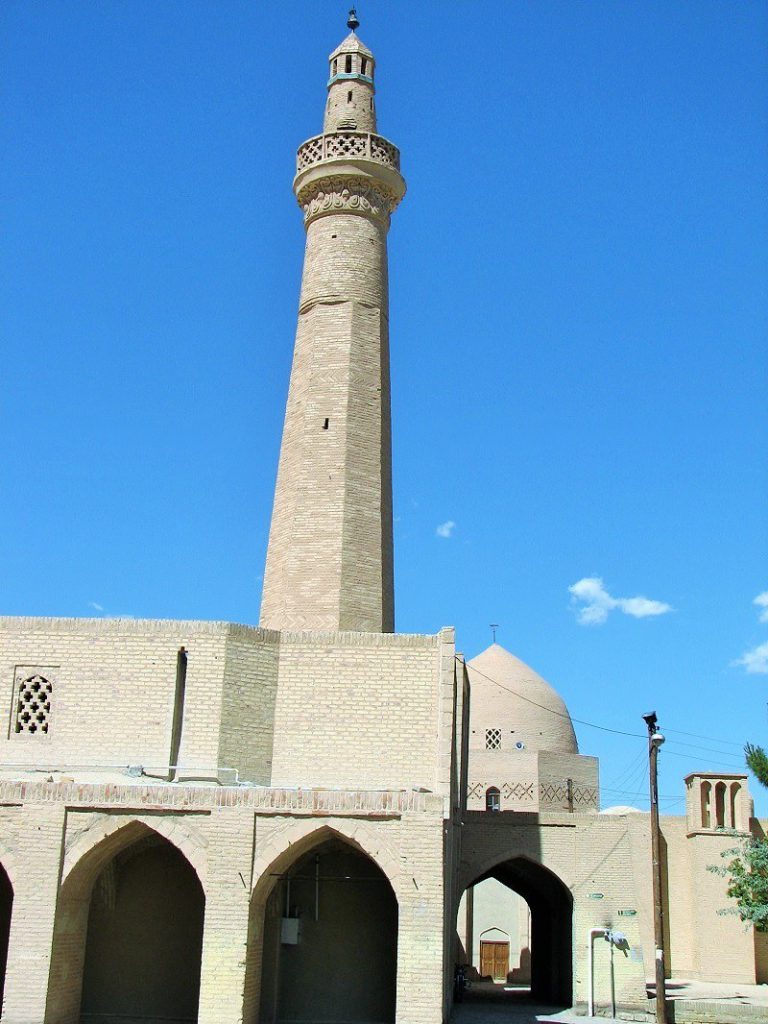
The Friday Mosque of Naein is one of the oldest mosques in Iran. The construction and decoration of the mosque are in the Sassanid architecture style of pre-Islam Iran. There is a large courtyard in the middle of the mosque and some columned shabestans (prayer halls) surround it.
Naein Mosque is in Khorasani style. It is one of the rare initial mosques consisting of Shabestan. It has experienced the least transformation and has retained its original form until today. The construction of its original building dates back to approximately the 9th century forming now a large part of the current mosque.
Khajeh Khezr Mosque of Naein
The mosque, known also as the Khajeh Mosque among local people, is located in the Nogabad neighborhood, at the end of the bazaar of Naein. The entrance is exactly in front of the main passageway of the bazaar.
Sar-e Kuche-ye Mohammadiyeh Mosque
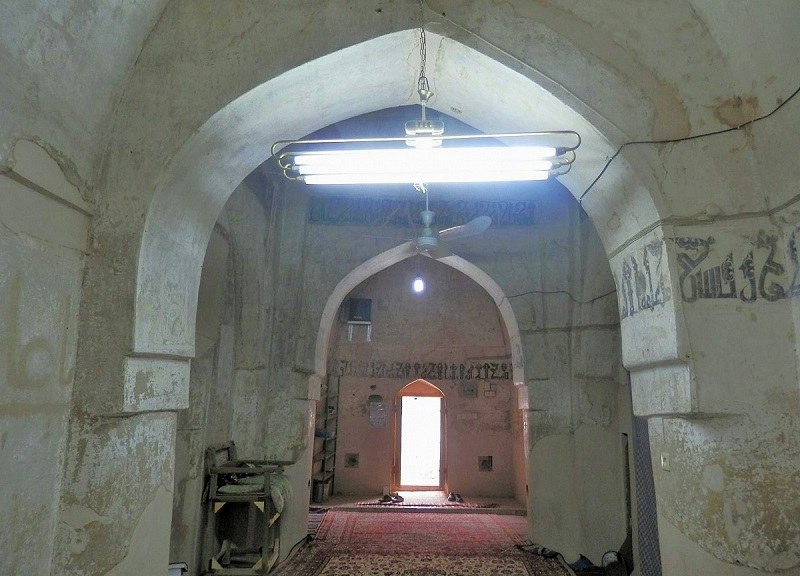
This traditional building is located in Mohammadiyeh neighborhood, an old neighborhood of Naein. The construction of Sar-e Kuche-ye Mohammadiyeh Mosque belongs to the early centuries of Iran after the advent of Islam. In other words, it dates back at least a thousand years ago. Therefore, it is completely different from other mosques in terms of the shape and architectural plan.
Seyyed Mohammadiyeh Mosque
This mosque is one of the oldest mosques in Naein, and even in Iran, located in Paderakht neighborhood, Mohammadiyeh Village, 200 meters from the center of Mohammadiyeh. The mosque probably belongs to the Safavid era, and its features include a beautiful dome and a door with woodcarving.
Sheikh Maqrebi Mosque
Another mosque of Naein is Sheikh Maqrebi Mosque. Researchers studying about Naein have mentioned the name of this mosque, but have not written anything of the exact date of its construction. The located of this mosque is in Naein Bazaar.
Emami House
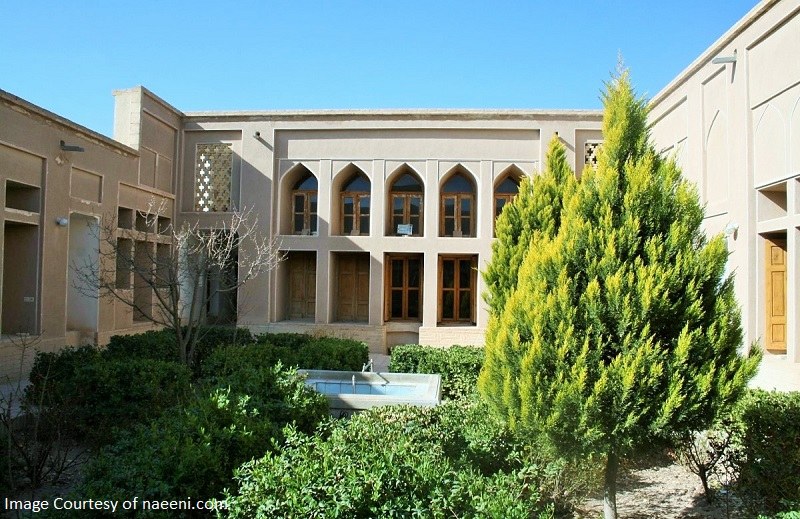
One of the most important traditional houses in the city of Naein is the Emami Traditional House. The house is located in the historic district of Kalvan, a traditional neighborhood of Naein. The main building of the monument dates back to the Safavid era, but it has experienced changes in the spaces and architecture during the Qajar era.
Fatemi House
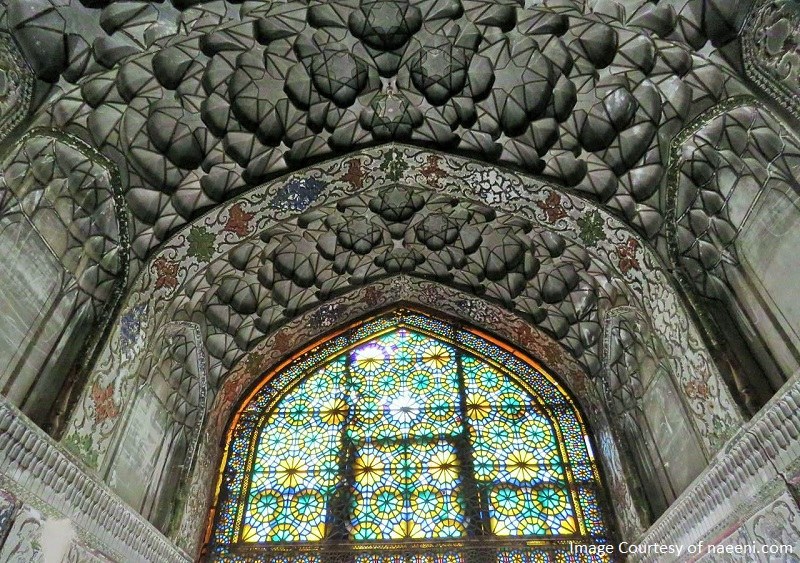
The building of the Fatemi House is located in the Noabad neighborhood and adjacent to the traditional bazaar of Naein. This is one of the most prominent traditional houses in this city.
Pirnia Traditional House
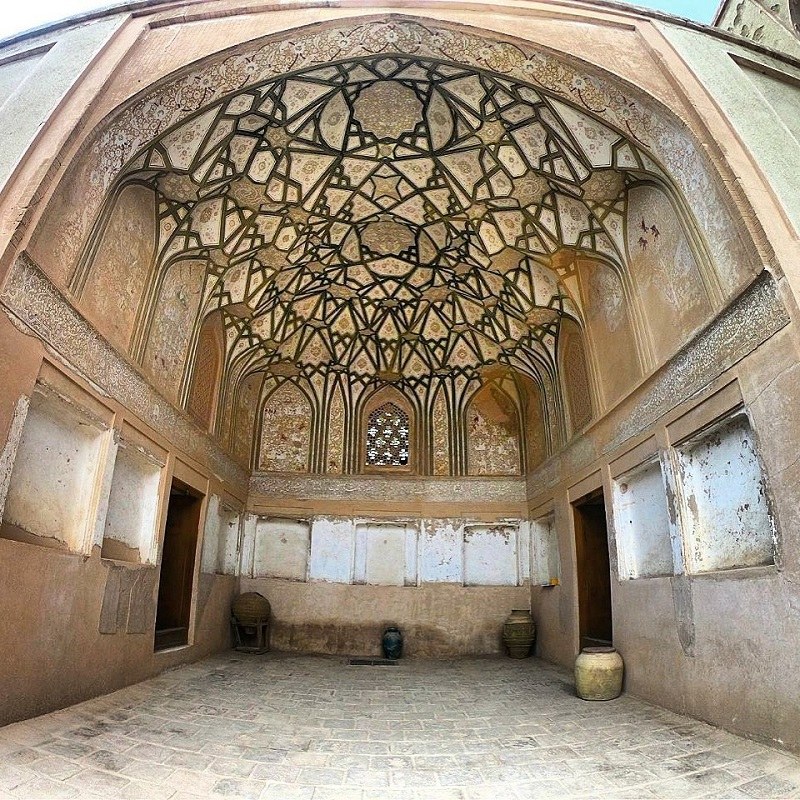
The traditional house of Pirnia is opposite the Friday Mosque of the city and in Bab al-Masjid neighborhood. Currently, this house is the center of Naein Cultural Heritage Office and the Ethnological Museum of the city. The house dates back to 400 years ago, remained from the Safavid era. It was the residence of a senior judge of the Safavid dynasty.
Traditional Bazaar of Naein
The old and traditional bazaar of the city is one of the earliest traditional bazaars in Iran. It was the major shopping and business center of Naein in the past.
The entrance port to the bazaar is one of the oldest gates of the city, also known as the “Traditional Gate of Chehel Dokhtar”. Due to the need for reconstruction, many segments of the bazaar are now closed and under repair.
Masoom Khani Water Reservoir
The Water Reservoir of Masoom Khani is the main water reserving cistern of Naein. Masoom Khani was a benefactor who constructed this water reservoir in the Pahlavi era.
It is located in Chehel Dokhtar neighborhood, alongside Chehel Dokhtar Gateway. This monument is inscribed in the National Heritage List of Iranian monuments.
Historical Attractions outside the City
Here’s a list of interesting places outside Naein:
Chahar Taqi Pakooh
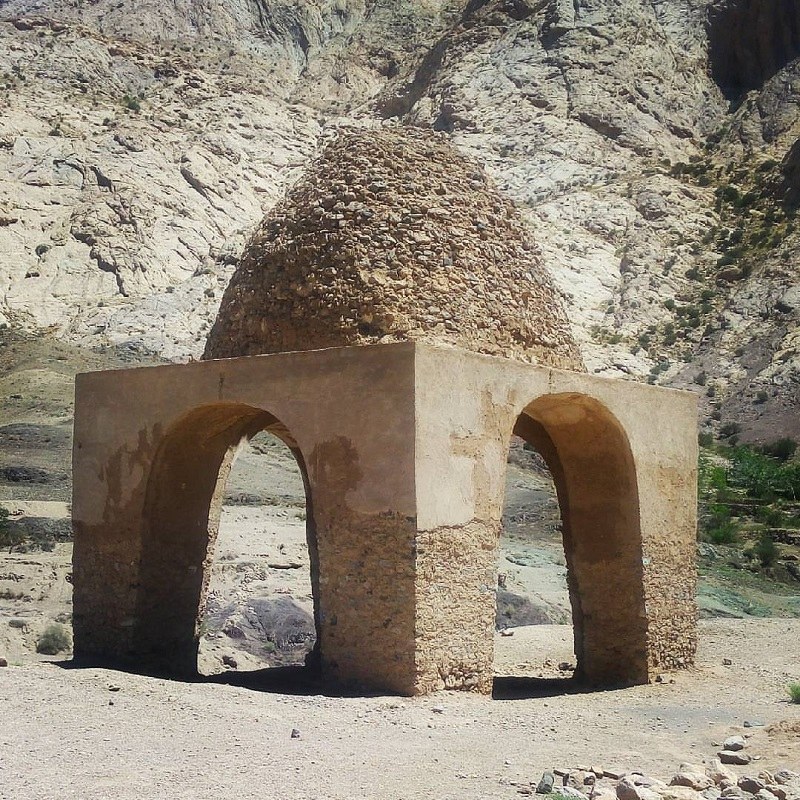
One of the significant pre-Islam monuments in this area is the Chahar Taqi Pakooh building. It is 30 kilometers east of the city in Koohshir Village. The architects built this pre-Islam religious building with cobble and Sarooj mortar.
Separou Fire Temple
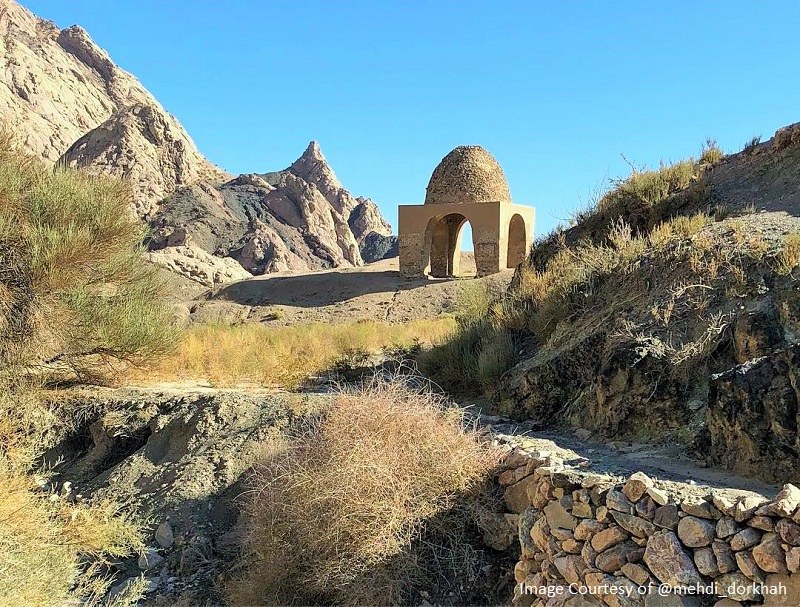
The fire temple of Separou is at Shirkouh in Separou Village, 30 kilometers northwest of Naein. The fire temple, locally called Chahardari, is inscribed at the Iranian National Heritage List as an ancient building of the Sassanid era.
Ashuragah Castle
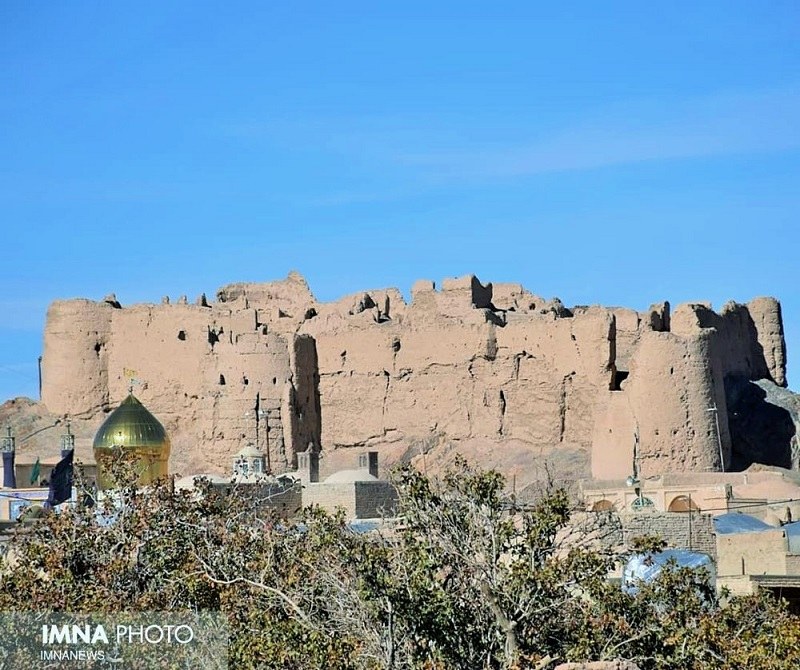
The castle is located on a mountain overlooking Mohammadiyeh Village. It dates back to the centuries before the formation of Naein. We can see Ashuragah Castle from almost all parts of Mohammadiyeh Village and from this city to Anarak road. Due to the strategic location of the castle, it was probably a defensive fortress in the past.
Rostam Castle
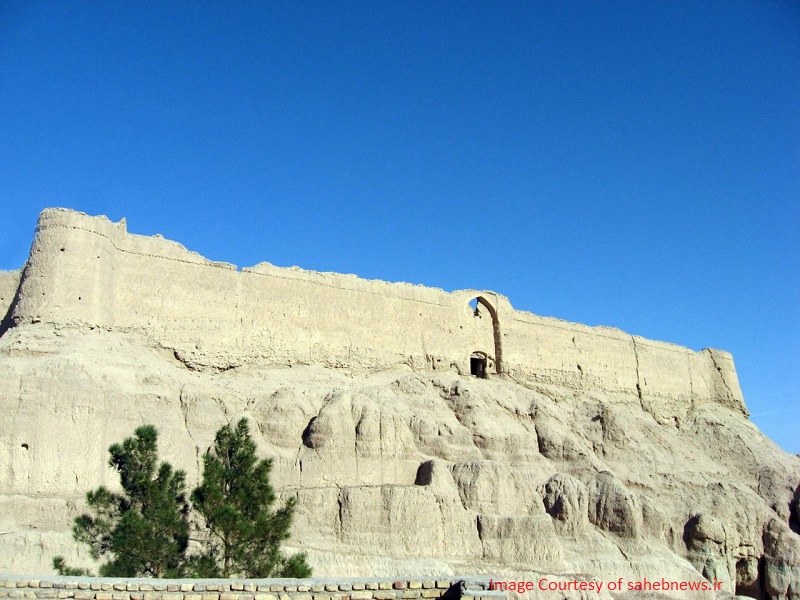
This castle is located in Bafran Village in the east of the city. Unfortunately, due to the lack of attention and consideration, it is being destroyed.
Natural Attractions around the City
Here’s a list of fascinating places in nature close to Naein:
Moshkenan Village
This village is located in the final section of the Zayanderud River. The weather in this village is hot in summer, but it is pleasant at night. In winter, it is cool and mild. The village is 45 km away from Naein and 85 km away from Isfahan.
Neyestanak Village
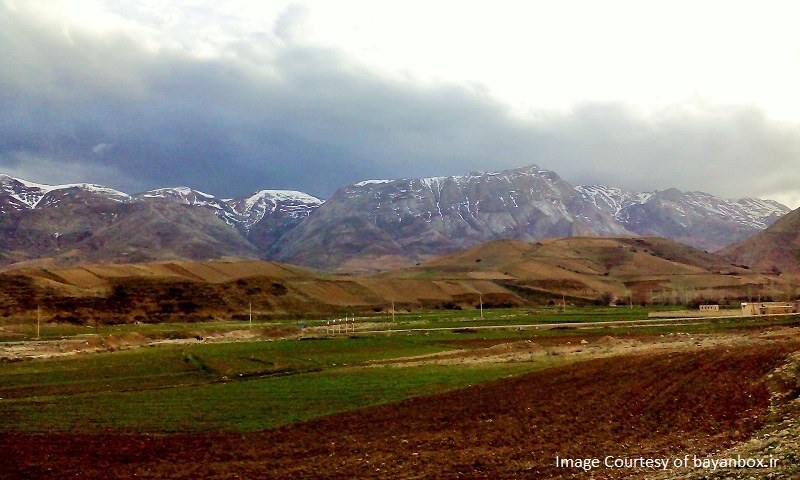
This village is in the central district of Naein County, Isfahan province. It is 30 km away from the city. The local people call it “Neyestaneh”. In the historical texts, it has other names too.
Badafshan Village
Some of the historical sources mention that the name of “Badrud” was Badafshan in the past. The ancient sources have also introduced it as a summer pasture village.
Abbas Abad Hunting Protected Area
With an area of 305,854 hectares, Abbas Abad Hunting Protected Area is located 100 kilometers northeast of Naein. This area consists of plains and a series of interconnected mountains. It is a pure and pristine habitat for a variety of plant and animal species in the heart of the desert.
Ejdeha Cave
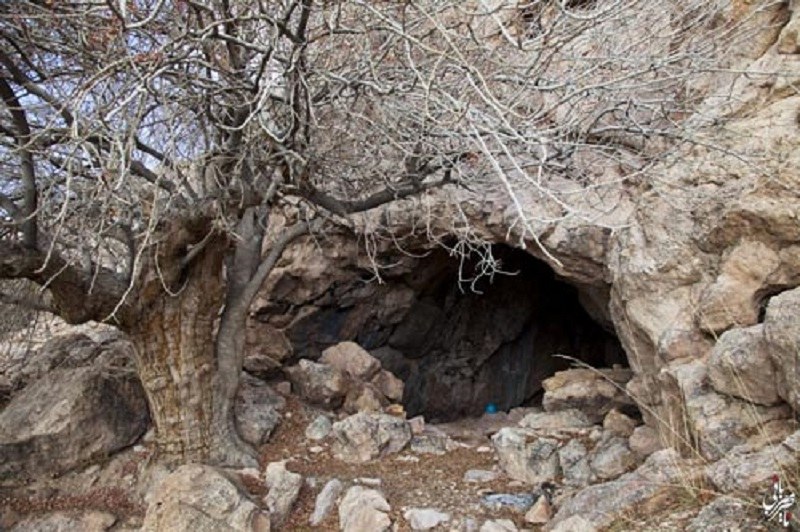
Leaving from the city and passing about 30 km, on a side road to Soheil and Separou villages, there is a cave called Ejdeha Cave (means Dragon Cave in Persian). The length of the cave is 50 meters. According to villagers, the name was chosen like that to frighten people and prevent them from entering the cave.
Mil Mountain
This mountain is part of the central highlands of Iran. Its southern slope leads to the foothills and the northern slope reaches Naein County. The highest peak of this mountain is Mil, with a height of 3,035 meters.


